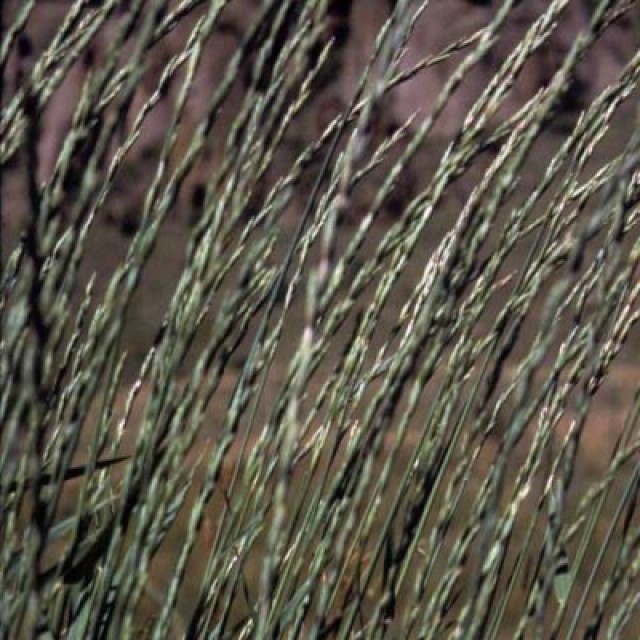COMMON NAME
Western wheatgrass
SCIENTIFIC NAME
Pascopyrum smithii
ALSO KNOWN AS
bluejoint wheatgrass, bluestem wheatgrass
Plant family
Grass (Poaceae)
Plant group
Grasses
Western wheatgrass is a native cool season grass native to North America.
37 reports
25+
OBSERVERS
37+
OBSERVATIONS
Identification hints
Western wheatgrass is similar to other wheatgrasses, however, it is coarser, its rhizomes spread more aggressively, and its coloration is blue-green or gray rather than green. Stems are either alone or in clusters and 1-3 feet tall.
Did you know?
Western wheatgrass is used as forage for all classes of livestock and wildlife. It is a preferred feed in spring for cattle, horses, deer, and elk. This grass can be used in urban areas where irrigation water is limited to provide ground cover and to stabilize ditch banks, dikes, and roadsides. Western wheatgrass is the official state grass of both North and South Dakota.
DISTRIBUTION IN TH U.S.
Alaska
,
Arkansas
,
Arizona
,
California
,
Colorado
,
Georgia
,
Iowa
,
Idaho
,
Illinois
,
Indiana
,
Kansas
,
Kentucky
,
Massachusetts
,
Michigan
,
Minnesota
,
Missouri
,
Montana
,
North Dakota
,
Nebraska
,
New Hampshire
,
New Mexico
,
Nevada
,
New York
,
Ohio
,
Oklahoma
,
Oregon
,
South Dakota
,
Tennessee
,
Texas
,
Utah
,
Washington
,
Wisconsin
,
Wyoming
HABITAT
Western wheatgrass is a component of many grassland, sagebrush deserts, and pinyon-juniper woodlands in the West. Its natural geographic range extends from northern Minnesota, west to eastern Washington, and south to west central California and western Texas, from 1000 to 9000 ft (304 to 2,743 m) elevation. It has also been introduced to Alaska, but is native in the southern Canadian provinces.Western wheatgrass likes periodically moist fine or medium textured soil, and can tolerate saline to saline-sodic conditions.
ATTRIBUTES
Leaves
The leaf blade is about 4 to 10 in (10 to 25 cm) long and 0.1 to 0.3 in (0.25 to 0.76 cm) wide. The blade tapers off to a sharp point. The bluish-green leaves come off the stem at a 45 degree angle. The leaves are stiff and flat, mostly smooth with a strongly ribbed upper surface.
Flowers
Wheatgrasses have flowers on dense spikes, with flowers directly attached alternately and sideways, but often overlapping on the flower stem. About 4 to 11 flowers are found on small spikelets that are 0.4 to 0.8 in (1.02 to 2.03 cm) long and a blue-green to grayish color similar to the rest of the plant.
Fruits
The seedhead is a slender spike. The seed spike is stiff, erect, and about 2 to 6 in (5 to 15 cm) long with hard seeds inside.
Bloom Time
The leaves begin to develop in early March to mid-June depending on location. Flowering occurs typically from June to August. The seeds ripen as early as mid-June and continue through September. The seeds disperse from late July to late November.
See Menu
- 2021 Chicago Botanic Garden. All Rights Reserved.
-
Creative Commons
BY-NC-SA 4.0 - Terms of Use
- Privacy Policy
- Data Sharing and Citation Policies
- 2021 Chicago Botanic Garden. All Rights Reserved.



